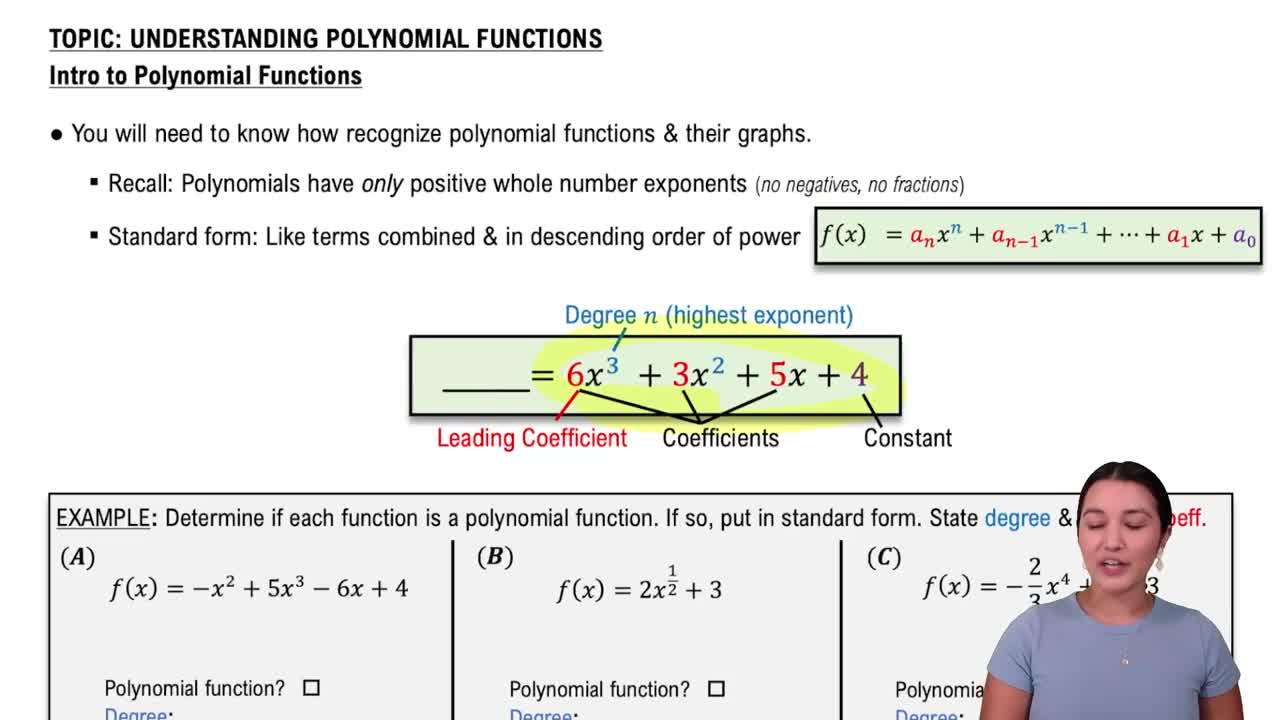Here are the essential concepts you must grasp in order to answer the question correctly.
Function Composition
Function composition involves combining two functions to create a new function. In this case, (ƒg)(x) means substituting g(x) into ƒ(x). This process requires evaluating the outer function ƒ at the output of the inner function g, which can lead to a new expression that represents the combined behavior of both functions.
Recommended video:
Domain of a Function
The domain of a function is the set of all possible input values (x-values) for which the function is defined. For polynomial functions like ƒ(x) and g(x), the domain is typically all real numbers. However, when composing functions, it is essential to consider the domain of the inner function g(x) and ensure that its output falls within the domain of the outer function ƒ(x).
Recommended video:
Domain Restrictions of Composed Functions
Polynomial Functions
Polynomial functions are mathematical expressions that involve variables raised to whole number powers, combined using addition, subtraction, and multiplication. The functions given, ƒ(x) = 2x² - 3x and g(x) = x² - x + 3, are both polynomials. Understanding their structure helps in analyzing their behavior, such as finding their composition and determining their domains.
Recommended video:
Introduction to Polynomial Functions



